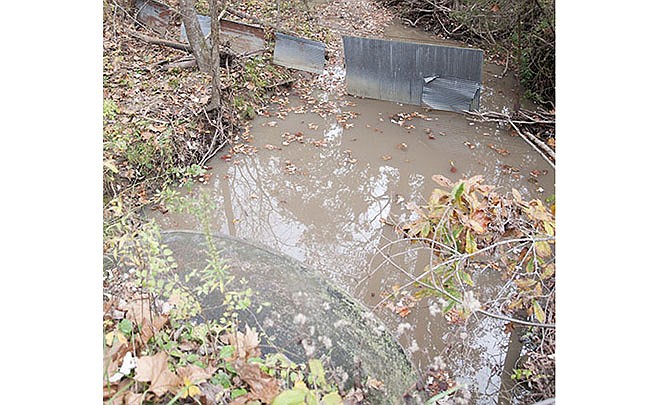HATTON, Mo. - A 10,000-gallon hog waste spill into a Callaway County stream is expected to be cleaned up by today, according to Missouri Department of Natural Resources spokesperson Gena Terlizzi. The stream flows through the Mark Twain National Forest and is a tributary of Millers Creek.
The spill occured during land application of the waste, which is used as fertilizer for crop fields. Pork Masters hog operation on Horstmeier Farms generated the waste. Horstmeier Farms' hog operation uses a lagoon system, meaning manure sits in a more than three million-gallon lagoon before being pumped for fertilizer.
The spill is in violation of Pork Masters' no discharge permit, Terlizzi said.
Callaway Farrowing LLC, a spinoff of Iowa-based company Eichelberger Farms Inc, submitted an operating permit to the DNR in August for a 10,000-hog facility adjacent to Horstmeiers' current hog operation.
The proposed facility will replace the current hog farm, which has the capacity for 5,600 sows. Several public meetings have been held on the hog farm situation, and another is set for 7 p.m. Nov. 6 at Hatton-McCredie Elementary School with represenatives from DNR.
Neighbor Ronnie O'Neal said he's always been opposed to a proposed 10,000-hog facility coming to Horstmeier Farms, but this spill raises more concerns. O'Neal said his worry comes from the numbers - an increase in hogs will increase the waste. He echoed past sentiments from Jeff Jones, spokesperson for Friends for Responsible Agriculture - the group opposing the proposed hog farm, about taking the operation to an area with less people.
"If people want pork you have to raise them, but somewhere not as populated," he said.
According to Callaway Farrowing's operating permit, the proposed gestation facility will produce more than 2.5 million gallons of manure per year, and the hogs in the farrowing building will produce more than 970,000 gallons of manure per month. Deep pits holding the waste will be pumped twice a year.
O'Neal said he first noticed something was wrong late Monday morning as he built a bridge over the stream on his 13-acre property off of County Road 237. The stream continues onto the Mark Twain National Forest and eventually into Millers Creek.
The stream, which he described as ditch-like, is typically dry, but rain can cause it to fill with water. The "ditch" rarely flows, but it was moving on Monday. What appeared to be more odd to O'Neal was that the water was black and had a foul odor. When the flowing water pooled, it created a brown foam, he said.
With each sniff, O'Neal knew hog waste contaminated the water. He raised pigs in the past, and has lived next to Horstmeier Farms' hog farm the entire time pigs have been on the site.
He contacted DNR and a representative was on-site that afternoon.
Horstmeier Farms were responsible for cleaning up the spill, Terlizzi said.
"(Clean up) has been completed by removing the source of the contamination and flushing with clean water," she said.

